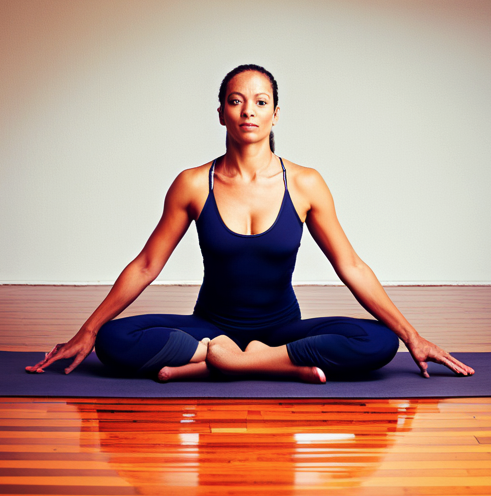Yoga is an ancient practice that offers numerous physical, mental, and spiritual benefits. It provides a holistic approach to health and well-being, combining physical postures, breathing exercises, meditation, and relaxation techniques. If you’re a first-time yogi, stepping onto your mat might feel both exciting and intimidating. Fear not! This blog post aims to guide you through the initial stages of your yoga journey with some valuable advice and tips.
- Start with a Beginner-Friendly Yoga Style: As a beginner, it’s important to choose a yoga style that suits your fitness level and goals. Hatha, Vinyasa, and Yin yoga are excellent options for beginners. Hatha yoga focuses on basic postures and is ideal for building strength and flexibility. Vinyasa yoga involves flowing sequences and synchronized breathing, offering a dynamic and invigorating practice. Yin yoga, on the other hand, focuses on deep stretching and relaxation, making it great for releasing tension and improving flexibility.
- Find a Qualified Instructor: Attending yoga classes led by a qualified instructor is highly recommended, especially when you’re starting out. An experienced teacher can guide you through proper alignment, help you modify poses as needed, and ensure you practice safely. Look for beginner-friendly classes or courses tailored to new students. Online platforms and yoga studios often offer introductory packages or free trials, providing a chance to explore different teachers and styles.
- Invest in a Good Yoga Mat: Investing in a good-quality yoga mat will enhance your practice by providing comfort, stability, and grip. Look for mats that offer adequate cushioning, traction, and durability. Your mat should be thick enough to support your joints and provide a non-slip surface for poses. Consider factors like material, size, and portability when choosing the right yoga mat for you.
- Practice Mindful Breathing: Breathing plays a vital role in yoga, helping you connect with the present moment and cultivate awareness. Practice deep, diaphragmatic breathing during your yoga sessions, focusing on inhaling and exhaling fully. Conscious breathing not only enhances your physical practice but also calms the mind and reduces stress. Pay attention to your breath, letting it guide your movements and allowing for a more meditative experience.
- Start Slow and Listen to Your Body: Yoga is a journey, and it’s important to respect your body’s limits as you begin. Start with simple poses and gradually progress to more challenging ones as your strength and flexibility improve. Remember that everyone’s body is unique, so don’t compare yourself to others. Yoga is a non-competitive practice, and your main focus should be on self-awareness, self-care, and self-acceptance.
- Prioritize Consistency Over Intensity: Consistency is key when it comes to reaping the benefits of yoga. Aim for regular practice, even if it’s just a few minutes a day. It’s better to practice for a shorter duration consistently rather than sporadically for longer periods. Over time, you’ll notice improvements in strength, flexibility, and overall well-being. Make yoga a part of your daily routine and let it become a source of relaxation and rejuvenation.
Embarking on your yoga journey as a first-timer can be a transformative and enriching experience. By starting with the right style, finding a qualified instructor, investing in a good mat, practicing mindful breathing, listening to your body, and prioritizing consistency, you’ll establish a solid foundation for your yoga practice. Embrace the process, be patient with yourself, and enjoy the journey of self-discovery and well-being that yoga offers.
